Matthew: Jesus’ Genealogy and Biblical Inerrancy
The first genealogy within the Gospel of Matthew is an important cornerstone of the Gospel. This genealogy—a relic of the pre-Jewish-Roman War—contains, at the very heart of it, a Jewish tapestry that may only be deciphered by a thoroughly Jewish mind. In interpreting the genealogy, we find that it is indeed the pinnacle of the Jewish message of the Gospel. Containing within it is the stupendous claim that Jesus of Nazareth—the carpenter and the Son of Mary—is in the line of King David and is worthy of the Throne of Israel. Lingering deep within this chapter is the Messianic priority that has been reserved for the Jews. As the words of St. Paul proclaim, “for it is the power of God for salvation to everyone who believes, to the Jew first and also to the Greek.”[1]
However, far from being considered as a scrupulously precise report, Matthew’s genealogy has been widely regarded as incomplete. The differences that it bears with its Lukan counterpart along with the omissions of the names of several kings are demonstrably palpable. At surface value, these details may indeed impugn Matthew as a reliable source. Furthermore, the supposed symmetrical structure of the genealogy that Matthew posited seems to contain asymmetrical number of persons. This issue is critical especially when it is put in relation to the traditional doctrine of Biblical inerrancy—which is the doctrine that requires for there to be no error within the Scripture. How can this be accomplished when even the first genealogy in Matthew contains such follies? Have Matthew really crossed the unpardonable line of errancy?
Within this essay, I would like to present a case in support of the inerrancy for the Gospel of Matthew in light of the supposed problems found within Matthew’s genealogy. I believe that when we look at the case fairly—examining the evidences to their roots—we will begin to see how the first genealogy is not just inerrant, but has effectively accomplished its designed purpose. I will begin by providing some context to the Gospel of Matthew before moving on to the structure of the genealogy, the alleged “problems” before finally ending in my reconciliation between Biblical inerrancy and the Matthean genealogy
Context Regarding the Gospel of Matthew and the Genealogy
The Gospel of Matthew was likely written around the late AD 60’s.[2] Although this has placed the Gospel at a later date in comparison with Mark, it is likely that the information in the gospel has been gathered from the Gospel of Mark itself.[3] However, as the Gospel of Mark itself does not contain the names in the genealogy, Matthew must have had garnered the names from both the Old Testament and the extrabiblical sources found in Temple of Jerusalem prior to its destruction in AD 70[4]Thus, Matthew bears witness to names of kings that are not found anywhere else in the surviving Jewish Literature. R.T France wisely remarks, “While most of the names between Zerubbabel and Joseph conform to familiar Jewish types of name, there is no reason to link any of the individuals listed with anyone who is known to us from other sources.”[5]
One of the interesting things about genealogy is its etymology. The word used in Matthew (translated in the NIV as: “genealogy”) is the Greek word γένεσις (“genesis”). This alludes to the creation of the world; the coming of Jesus was supposed to mark a new creation—a new beginning. Moreover, Genealogies are particularly important within the Jewish tradition. It is said that out of genealogies, disputes were settled regarding properties and extensive genealogies were scrupulously preserved as records of the family.[6] Thus, it is very unlikely for Matthew, as a Jew himself, to contrive the names of the descendants of Jesus. As Matthew himself was writing very early after the death of Jesus, any fraudulent contrivances will be easily verified (assuming that the Matthean Gospel is written before the fall of the Temple of Jerusalem in AD. 70)
Structure of the Genealogy
The genealogy is divided into three main sections as Matthew himself claimed:
17 So all the generations from Abraham to David were fourteen generations, and from David to the deportation to Babylon fourteen generations, and from the deportation to Babylon to the Christ fourteen generations.[7]
What importance does this hold? Matthew here seems to be designing his genealogy in a way that is symmetrical and easy to memorize. Thus, Matthew asserted that the genealogy contains fourteen generations per section. However, any shrewd reader will be apt to point out that the number does not correctly correspond to each section. Grant. R. Osborne points out,
There are fourteen names in the first series if David is counted. The problem is that there are only thirteen generations (periods between names)… In the second series, there are fourteen names only if David is not counted, so there are fourteen full generations (periods between names). In the third series, there are fourteen names if you count Christ.[8]
Here, Osborne rightly points out the numeral discord in each section. Let us consider the names in each series:
Series 1 (from Abraham to David): Abraham, Isaac, Jacob, Judah, Perez, Hezron, Ram, Aminadab, Nahshon, Salmon, Boaz, Obed, Jesse, David (14)
Series 2: (David to Jeconiah): David, Solomon, Rehoboam, Abijah, Asa, Jehosaphat, Jehoram, Uzziah, Jotham, Ahaz, Hezekieh, Manasseh, Amon, Josiah, Jeconiah (15)
Series 3 (Jeconiah to Jesus): Jeconiah, Shealtiel, Zerubbabel, Abihud, Eliakim, azor, Zadok, Akim, Elihud, Eleazar, Matthan, Jacob, Joseph, Jesus (14)
Osborne offers a creative escape as a way of interpreting this without asserting inaccuracy: “This is resolved by simply assuming that Matthew is counting the generation leading to Abraham.”[9] Thus, counting from Jesus, one can omit either Jeconiah or David from the second series—assuming the former to belong to the third series and the latter to belong to the first series. Our new series will thus be:
Series 1 (from Abraham to David): Abraham, Isaac, Jacob, Judah, Perez, Hezron, Ram, Aminadab, Nahshon, Salmon, Boaz, Obed, Jesse, David (14)
Series 2: (David to Jeconiah): Solomon, Rehoboam, Abijah, Asa, Jehosaphat, Jehoram, Uzziah, Jotham, Ahaz, Hezekieh, Manasseh, Amon, Josiah, Jeconiah (14)
Series 3 (Jeconiah to Jesus): Jeconiah, Shealtiel, Zerubbabel, Abihud, Eliakim, azor, Zadok, Akim, Elihud, Eleazar, Matthan, Jacob, Joseph, Jesus (14)
This strategy would satisfyingly do justice to Matthew’s original claim that there are fourteen generations each, while retaining the structural format.
The question as to why Matthew has chosen this particular format has perplexed the Biblical Scholar world. It is unclear as to what the number fourteen is supposed to represent. Nonetheless, many suggestions have been given.[10] One of the main suggestions has been gematria. This is the suggestion that even Osborne himself called as “the most likely.”[11] Gematria is the Jewish practice of using letters and alphabets for numbers. Every name and vowel has their own numeral significance—the word David in Hebrew consists of the three consonants dwd. Here, “d” equals to four and “w” equals to six (counted in Hebraic consonant order). In sum, the three letters produce the number fourteen. Scholars such as R. T. France, on the other hand, prefer the simpler explanation that fourteen is merely twice seven.[12]
The Omission of the Kings
This is the crux of the problem. The seemingly contrived structural format might have already given it away, but the genealogy has omitted—for some reason or another—the names of five kings along the line: Ahaziah, Joash, Amaziah, Jehoahaz, and Jehoiakim. Ahaziah, Joash, and Amaziah are supposed to be in between the line of Jehoram to Uzziah, while the two brothers Jehoahaz and Jehoiakim are in between Josiah and Jeconiah.
Analysis of the Kings
Any robust analysis of the omission of the five kings must contain a discussion of each of these kings. A pattern that of unrighteousness can be noticed within each of the kings. Ahaziah was blatantly described as an evil king who “walked in the ways of the house of Ahab.” (2 Chronicles 22:3). He was later captured in Samaria and killed by the men of Jehu, the tenth king of the Northern Kingdom of Israel. His successor, Athaliah, was subsequently executed and succeeded by Joash (2 Chr. 23:12-15)—who was the biological son of Ahaziah. Joash, in contrast, was first described as a righteous king (2 Chr. 24:2), but soon fell away at the end of his life. He was said to have served the Asherim and the idols and was later assassinated by his own servants (2 Chr. 24:18, 25). Likewise, Amaziah was a righteous king from the outset, but turned away later after striking the Edomites (2. Chr. 25:14).
It is obviously tempting for one to sway away the problem by merely attributing the omissions to the vile and the treacheries of these kings. Indeed, this solution has been proposed by R. T France himself. A clear success of such an approach is ambiguous, however—especially when the topic at hand is in regards to Biblical inerrancy. Such motives may give the opponents of the Scripture the necessary ammunition to impugn the Gospel of Matthew based on what they would perceive as “embellishments.”
Jehoahaz and Jehoiakim enters the picture as the two of the few ungodly kings recorded in 2 Kings 23-31 and 2 Kings 24:20. The Old Testament remarked that these kings include: Jehoahaz, Jehoiakim, Jehoiachin/Jeconiah, and Zedekiah. What does it, then, even mean when Matthew says “Josiah [is] the father of Jeconiah and his brothers?” A possible explanation is provided by Wilkins who points out that in the LXX (the Septuagint from where Matthew may have derived his genealogy from), the Greek word loakim denotes both Jehoiakim and Jeconiah.[13] It is possible that Matthew really intended for the word to have a double entendre—referring to both Jehoiakim and Jeconiah. Such an explanation will come more naturally when we understand the word “brothers” to not only mean the other rulers of the time, but also of the whole brotherhood of the Israelites sent to the exile—thus the whole clause is referring to a much greater scope than its literal meaning. Although this may be a possible interpretation, I shall adopt the worst possible scenario in this essay—that Matthew has actually omitted five kings from his genealogy.
In overall, the omission of the kings is a tougher issue to deal with for the inerrantist in comparison to the miniscule problem of the symmetrical structure. This understanding of Divine Inspiration is ubiquitous through the Christian tradition—and to deny such a doctrine costs a great price. Before we can proceed, however, it is good to inquire on what the biblical doctrine of inerrancy means.
Inerrancy
A solid understanding of what Biblical Inerrancy means will be vital to our discussion at hand. The most common misconception is that Biblical Inerrancy means that whatever the Bible says is true. However, this seems highly confused and misleading. For if whatever the Bible says is true, then the illustrations within the book of Revelation, would too, be literally true. But surely, this is absurd. The illustration in the book of Revelation is obviously a figure of speech or some sort. Thus, with this at hand, we can understand that defining inerrancy in its barest, narrowest sense will be counter-productive for any sincere truth-seeker. MacGregor avers:
“This classic doctrine of inerrancy stipulates that for each periscope within every document of the scriptural canon, when we first take into consideration that periscope’s original literary genre and the rules for what does and does not constitute an error in that genre, the periscope contains no errors.”[14]
The doctrine of Inerrancy does not concern what the Bible say on surface, but rather what the Bible teaches in its depth. We must determine the certain genre, literary tools, and context within a certain passage and determine whether it is correct in those senses.
Incompleteness and Inaccuracy
The best strategy for Christians, it seems, is to admit that there is incompleteness within the genealogy, but not inaccuracy. Herein, the difference is apparent. The Bible, for example, does not teach astrophysics or medicinal science. Does this mean the Bible is unqualified? By no means! Omissions of such details only signify an incompleteness of the Bible in discussing those topics.
However, here, we can go a step even further and ask ourselves, “is it appropriate for the Bible to omit such details?” Obviously, with regards to subjects such as astrophysics or medicinal science, one will adamantly agree that it is in all of a Bible’s propriety to leave out details that are not conducive to what the Bible focuses—the message of Salvation and knowledge of the One true God.
From here, we must likewise ask, “is it appropriate for the Gospel of Matthew to omit certain names within the genealogy?” If Matthew here meant to be precise and complete in his genealogy, doubtless that an incomplete genealogy would be Matthew’s errancy. However, does Matthew really intend for his genealogy to be perceived in such a way? Modern scholars think not.
The Purpose of the Genealogy
Matthew’s personal obsession in scrupulously arranging a symmetry is to be baffled about. Such an obsession, fortunately, helps to reveal to us Matthew’s original intent for the genealogy—an easy, memorisable, family data to help act as “signposts” for his Jewish audiences to identify Jesus within the line of the family of David. This identification of Jesus resonates with the unanimous view of New Testament scholars. Thus R. T. France says,
“But its [genealogy] main aim is clear enough: to locate Jesus within the story of God’s people as its intended climax, and to do it with a special focus on the Davidic monarchy as the proper context for a theological understanding of the role of the person whom Matthew, more than the other gospel writers, will delight to refer to not only as “Messiah” but also more specifically as “Son of David.”[15]
For such a purpose, the omission of the four kings will indeed be a beneficial tool in catalysing a compact genealogy for the purpose of easy memorization. In such a case, only the key people will be necessary within the genealogy with the purpose of acting as “signposts” pointing to the right direction. In fact, Craig S. Keener pointed out, “Matthew opens his Gospel by showing both Jesus’ historic inseparability from the history of Israel… The opening verse of the Gospel introduces two ancestors who become pivotal characters in the genealogy: Jesus is the son of Abraham (the ideal Jew) and the son of David (the Messiah).”[16] Here, Keener has even gone on to reduce the pillars of the genealogy to merely two characters: Abraham and David.
Keener goes on to argue that the main purpose of Matthew’s genealogy is not at all to show the genetic ancestry, but the emphasis has always been on His spiritual ancestry.[17] Ergo, he asserts, “Matthew thus establishes rhetorical community with his audience in his proem; proems typically appealed to audience sympathy.”[18] Keener’s view that such a genealogy is intended to build an emotional relation to the audience echoes well with Matthew’s colloquial and symmetrical format. Matthew here is not writing formally, but as a fellow Jew in his own relation to his brethren.
This theme of Jewish relation is indeed the majority view of Bible commentators with regards to Matthew’s purpose through the genealogy. Often times, this has been marked by the interpretation that Matthew has a theological focus more than one that is historical. Again, the theme is brought up that Matthew is not acting just as a historian in his writing, but also as a theologian. Wilkins’ statement is typical: “Matthew’s opening verse gives an important clue to his overall purpose and perspective. It had special meaning for those with a Jewish background, attempting both to awaken the faith of Jews and to strengthen the faith of Jewish Christians, insofar as Jesus is the “Messiah,” the “son of David,” the heir to the promises of Israel’s throne through King David.”[19] Some commentators have even gone so loose and say that for Matthew, this theological focus trumps over his historical focus. Thomas G. Long comments,
“It seems here that Matthew is more interested in making a theological point than in being genealogically precise. Almost every commentator has noted that this pattern of sets of uniformly numbered generation is an artificial creation, for each of these three time periods cover too many years to be spanned by only fourteen generations.”[20]
Comparison to Lukan Genealogy
A much broader issue appears once we compare the Matthean genealogy to its Lukan counterpart as expounded within Luke 3:23-38. Wilkins has formulated a list of five main differences that rifts apart the two genealogies.[21] 1) Matthew gives a descending genealogy, beginning with Abraham while Luke gives an ascending genealogy, starting with Jesus and tracing it backward to Adam. The Matthean genealogy here is more faithful to the Jewish tradition of genealogies while the Lukan genealogy adhere to genealogies more commonly found in Greco-Roman tradition. 2) Mathew places special emphasis on the covenants made with Israel, by tracing Jesus’ lineage to David and Abraham. Meanwhile, Luke places special emphasis on Jesus’ relation to all of humanity and to God by tracing his lineage to Adam and God himself. 3) The names of several persons after the Babylonian deportation differs between the two genealogies. Matthew follows the line through Jeconiah, Shealtiel, and Zerubbabel. Luke follows the line through Neri, Shealtiel, and Zerubbabel. 4) Matthew omits several names that are found in the genealogy of Luke. 5) Matthew puts emphasis on Jesus’ kingly lineage. David is not simply the son of Jesse—as Luke titles him—but that he is “King David”. Matthew traces Jesus’ genealogy through David’s son Solomon, while Luke traces the line through David’s son Nathan, who never reigned as king.
The issue of our interest regarding Matthean genealogy and Biblical inerrancy concerns third, fourth, and fifth point. The difference in the genealogy between Matthew and Luke itself is enough to crumble down the Biblical inerrancy. In the next passage, I shall attempt to reconcile the two together and provide a possible solution.
Reconciliation with Biblical Inerrancy
Henceforth, I will be arguing my last point—that by the context and the Biblical data that we have, we can see how the Matthean genealogy may be vindicated from accuses of errancy with regards to the omission of the four kings, differences with the Lukan genealogy and further, with regards to its symmetrical structure.
With regards to its symmetrical structure, we have observed that it is possible for us to view the genealogy in a way that will circumvent the issue of the asymmetrical number of people in each set. Although the first and third set contains fourteen people on its own, while the second contains fifteen, an easy way out would be to assume that Matthew was simply counting the generations leading to Abraham. Such a trick allows us to bypass the problem and retain the symmetrical structure of the genealogy that Matthew postulated.
With regards to the omission of the five kings, we have seen previously how this is consistent with the context of the Matthean genealogy—written colloquially in a structure that is memorisable to form an emotional relation with Jews who are reading the gospel. By the scrupulosity of Matthew towards its structural rigidity (despite the messiness that still ensues nevertheless) we can understand that Matthew never intended for his genealogy to be written as a complete, formal genealogy. Rather, his symmetrical focus and the unnecessity for the completion of the genealogy points to how Matthew deliberately omitted those kings in favour of the structural format.
Within such genre and context—there is no necessity for the genealogy to be precise. It ought to be precise only with regards to its theological and literary purposes—which it did. Therefore, form here we can infer that Matthew has indeed fulfilled its context, literary genres, and purposes; this is precisely what is needed to sufficiently fulfil the criteria for inerrancy. David L Turner is correct in saying, “Matthew has omitted three names … and other omissions can also be noted. But it is not that Matthew has erred, since he did not intend to work exhaustively and precisely.”[22]
Moreover, considering the insignificance of these five kings as signposts in the line of David, it would do little if those kings were omitted. To accomplish his purpose in the context of providing an informal genealogy for the lay people, the structural format has to be prioritized. In this regard, Matthew’s decision may even be praiseworthy as it shows his shrewdness as an author. It is further worthwhile to mention Keener’s remark that within the genre of ancient genealogies, it is not uncommon for such omissions to happen.[23] If this is indeed true, it would imply that not only such omissions permissible, but also in line with the mainstream tradition of ancient genealogies.
More, however, needs to be added with regards to the Lukan genealogy. There have been several possible suggestions posed as to how we can construe the differences in the Lukan and the Matthean genealogy. Luther has suggested that Matthew offered the Joseph’s ancestry while Luke offered Mary’s. This position, however, runs aground when we see the explicit wording in Luke 3:23 (cf. Luke 1:27). R. T France further excoriate this position by pointing out that ancient Jewish genealogies were not traced through the mother.[24] Another view that sprung up would be that either Matthew or Luke has simply invented names. But again, such a case is very unlikely. Genealogies are simply too important for any Jew to treat them so cavalierly.[25] Thus, Contemporary scholars have now opted for a third position that Matthew emphasized the royal lineage of Jesus by tracing the “throne-succession of the actual, and, after the exile, the putative kings of Judah.[26] Meanwhile, Luke may have emphasized the actual biological lineage of Jesus. France confesses that such a view may be speculative, but it is indeed possible that biological and dynastic line run on separate lines while converging on multiple occasions.[27]
Conclusion
I hope to have established a firm case for a reconciliation between the Matthean genealogy and Biblical inerrancy. As we have thus far seen, the obstacles into reconciling the two of them have fallen short. Though it is not at all unreasonable to doubt Matthew’s inerrancy—especially in light of its differences with the Lukan genealogy—, by the strength of the evidences, it seems more plausible for us to adhere to its inerrancy. Such a view is far more supported by our present understanding of Jewish tradition—their scrupulous preservation and recording of genealogies. With regards to the omission of the five kings and the asymmetrical number of people in the genealogy, I hope to have shown that there can be no reasonable doubt that Matthew has intended for the omission and this, too, fulfils the context, genre and purpose of the genealogy. The purported “asymmetry,” on the other hand, may be resolved simply with a quick re-evaluation as provided above.
Notes
[1] The Holy Bible: English Standard Version. (2016). (Ro 1:16). Wheaton: Standard Bible Society.
[2] The date of the authorship of Matthew has been clouded with much obscurities. The general scholars have been divided into two camps: the pre-70 AD camp and the Infra-70 AD camp. The position posed within this essay is the traditional position of the early Church Fathers. See Iraneus’, Against Heresies, 3.1.1. For a complete discourse regarding the debate of Matthew’s date of authorship, see R.T France, The Gospel of Matthew, 18-19; Michael J. Wilkins, Matthew, 24.
[3] K Lachmann, 1835; C. H. Weisse and C. G. Wilke, 1838; H.j. Holtzmann, 1863; B. Weiss, 1886; B. H. Streeter, 1924. This impressive list of 19th century scholars who have persuasively argued for the primacy of the Gospel of Mark is gathered in Edwards, James. R. 2002. The Gospel According to Mark. Wm. B. Eerdmans Publishing Co.
[4] Genesis Rabbah 98:8; j. Taʿanit 4:2; see Anthony J. Saldarini, Pharisees, Scribes and Sadducees in Palestinian Society: A Sociological Approach (Wilmington, Del.: Michael Glazier, 1988), 204–6.
[5] The genealogy in 1 Chr. 3 ends in Zerubbabel. See R.T. France, The Gospel of Matthew, 109
[6] Wilkins, Michael J. 2004. Matthew. The NIV Application Commentary. Grand Rapids: Zondervan. 57
[7] The Holy Bible: English Standard Version. (2016). (Mt 1:17). Wheaton: Standard Bible Society.
[8] Osborne, Grant. R. 2010. Matthew. Michigan: Grand Rapids: Zondervan. 60.
[9] Ibid.
[10] See Davies and Allison, Matthew. They discuss eight views of this arrangement.
[11] Osborne, Grant. R. 2010. Matthew. Michigan: Grand Rapids: Zondervan. 59.
[12] France, R.T. 2007. Gospel According to Matthew. Wm. B. Eerdmans Publishing Co. 103.
[13] Wilkins, Michael J. 2004. Matthew. The NIV Application Commentary. Grand Rapids: Zondervan. 62.
[14] See Kirk MacGregor’s Luis de Molina, Life and Theology of the Founder of Middle Knowledge, 177. In the book, MacGregor offers a compelling model for Biblical inerrancy that ought to draw our attention.
[15] France, R.T. 2007. Gospel According to Matthew. Wm. B. Eerdmans Publishing Co. 103.
[16] Keener, Craig S. 1999. A Commentary on the Gospel of Matthew. Wm. B. Eerdmans Publishing Co. 73
[17] Ibid. 77
[18] Ibid.
[19] Wilkins, Michael J. 2004. Matthew. The NIV Application Commentary. Grand Rapids: Zondervan. 65.
[20] Long, Thomas G. 1997. Matthew. Westminster John Knox Press. 10
[21] Wilkins, Michael J. 2004. Matthew. The NIV Application Commentary. Grand Rapids: Zondervan. 57-58.
[22] Turner, David L. 1994. Matthew. Baker Academic. 27.
[23] “But skipping some generations was common enough in ancient genealogies, and Matthew would have seen no harm in approximating generations.” Keener, Craig S. 1999. A Commentary on the Gospel of Matthew. Wm. B. Eerdmans Publishing Co. 75
[24] France, R.T. 2007. Gospel According to Matthew. Wm. B. Eerdmans Publishing Co. 104
[25] Ibid.
[26] Ibid.
[27] Ibid.
Recommended resources related to the topic:
Jesus, You and the Essentials of Christianity – Episode 14 Video DOWNLOAD by Frank Turek (DVD)
Why We Know the New Testament Writers Told the Truth by Frank Turek (mp4 Download)
The Top Ten Reasons We Know the NT Writers Told the Truth mp3 by Frank Turek
Counter Culture Christian: Is the Bible True? by Frank Turek (Mp3), (Mp4), and (DVD)
John A. Limanto is a fellow leader of Philosophy group in Pelita Harapan School and an aspiring Christian apologist in his local community. After living for 7 years in Borneo, he now resides with his family in Jakarta, Indonesia where he is pursuing his research on Molinism and free will.
Original Blog Source: https://cutt.ly/NhIaPsr

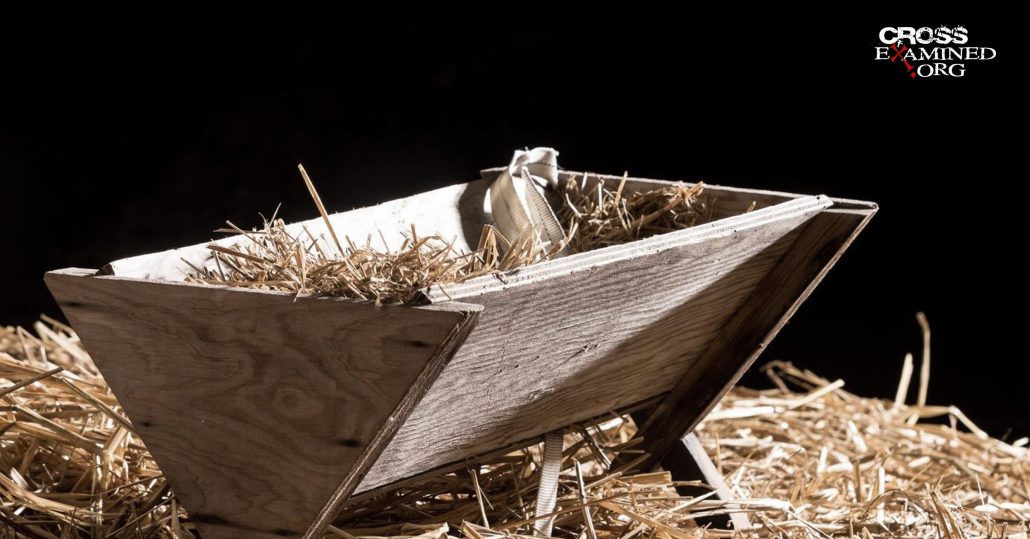
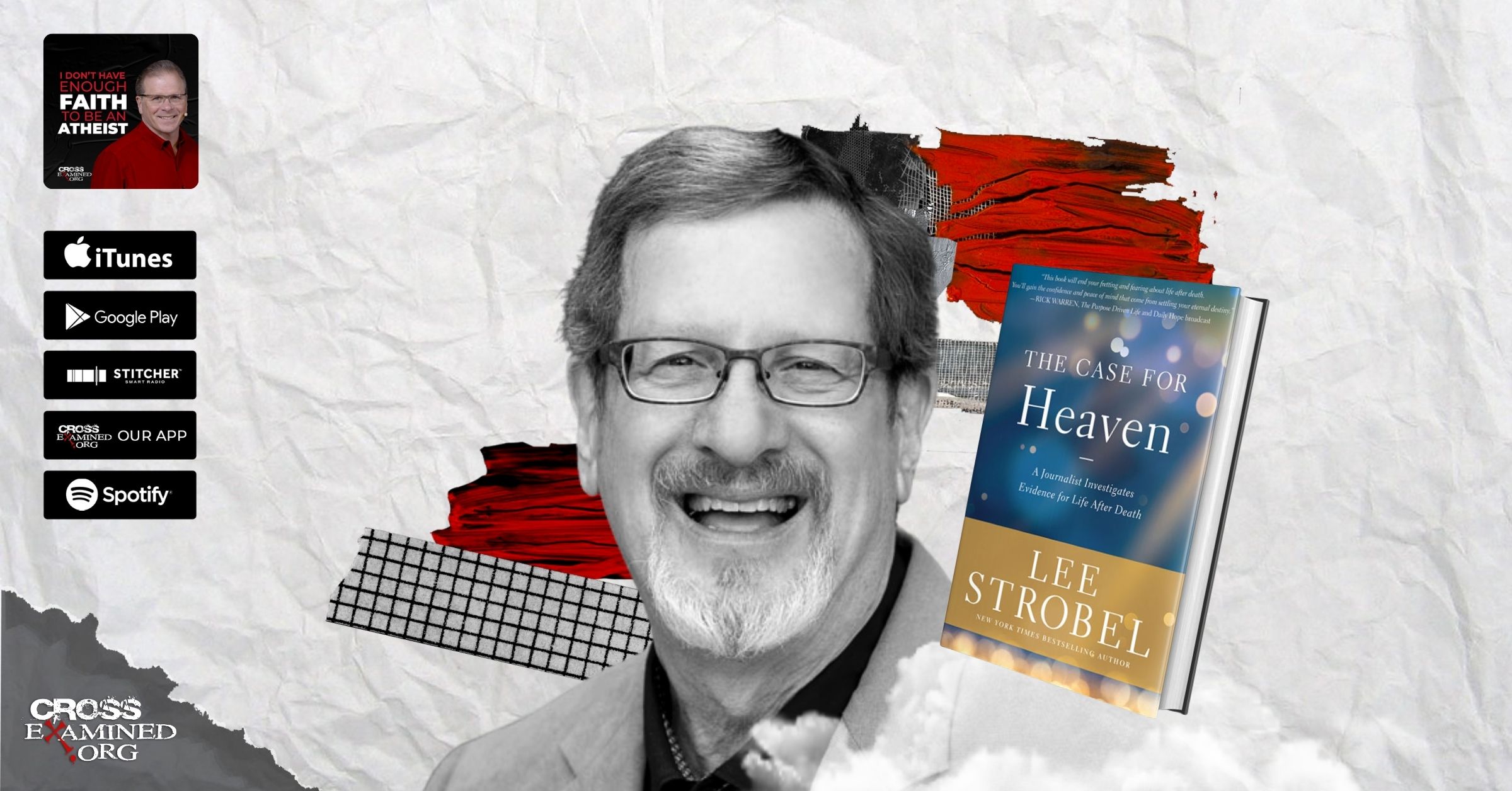



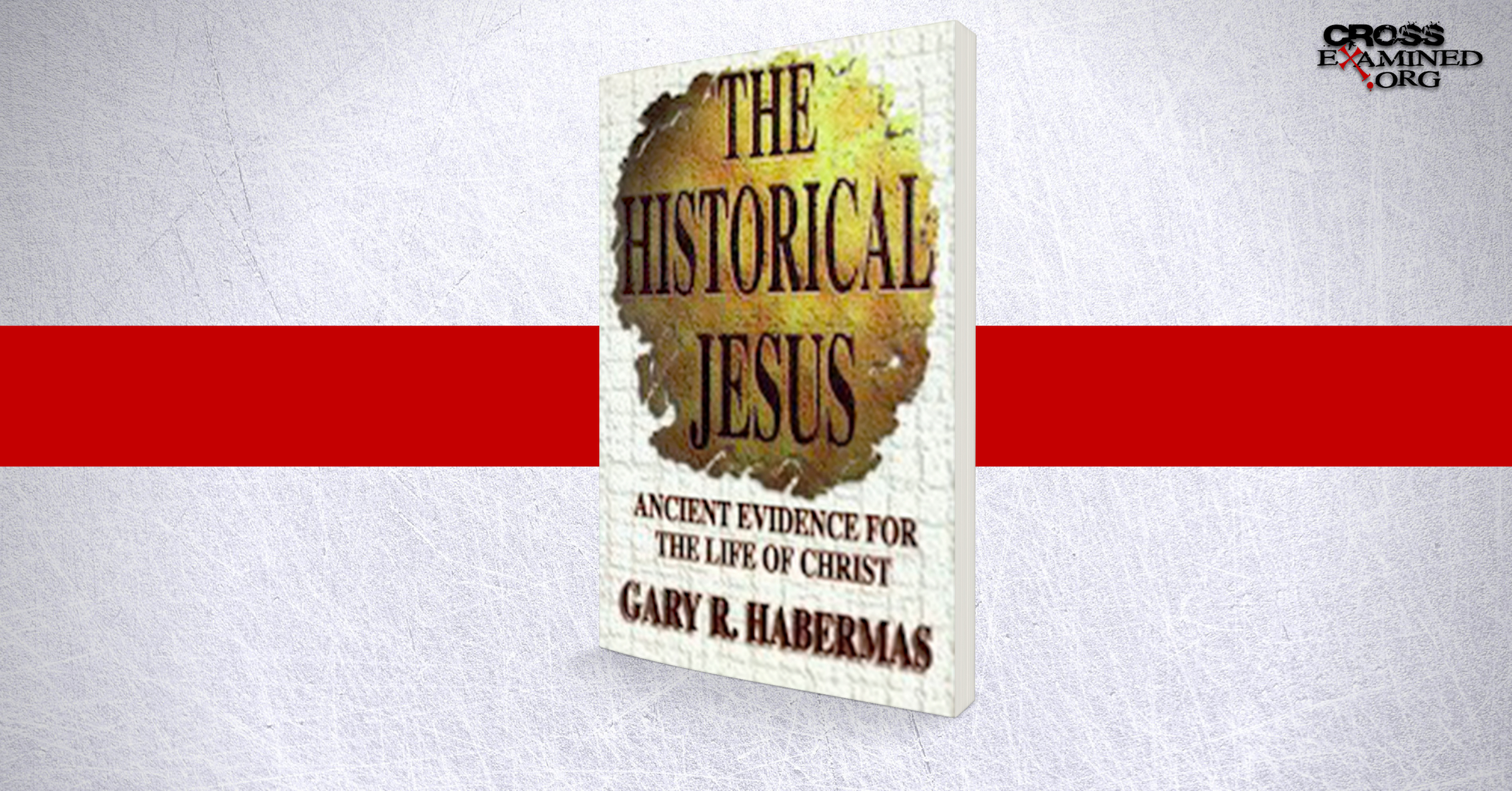
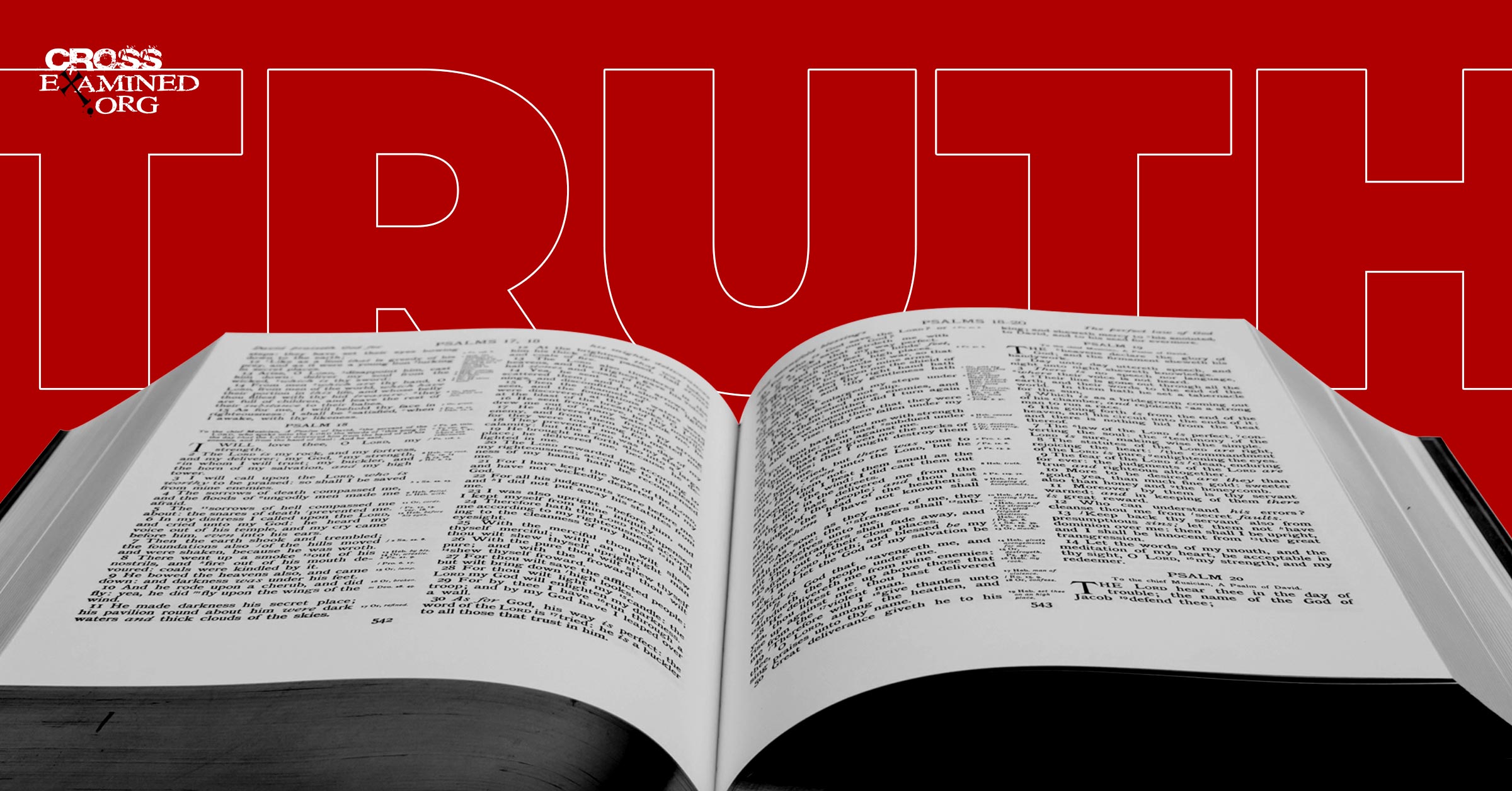
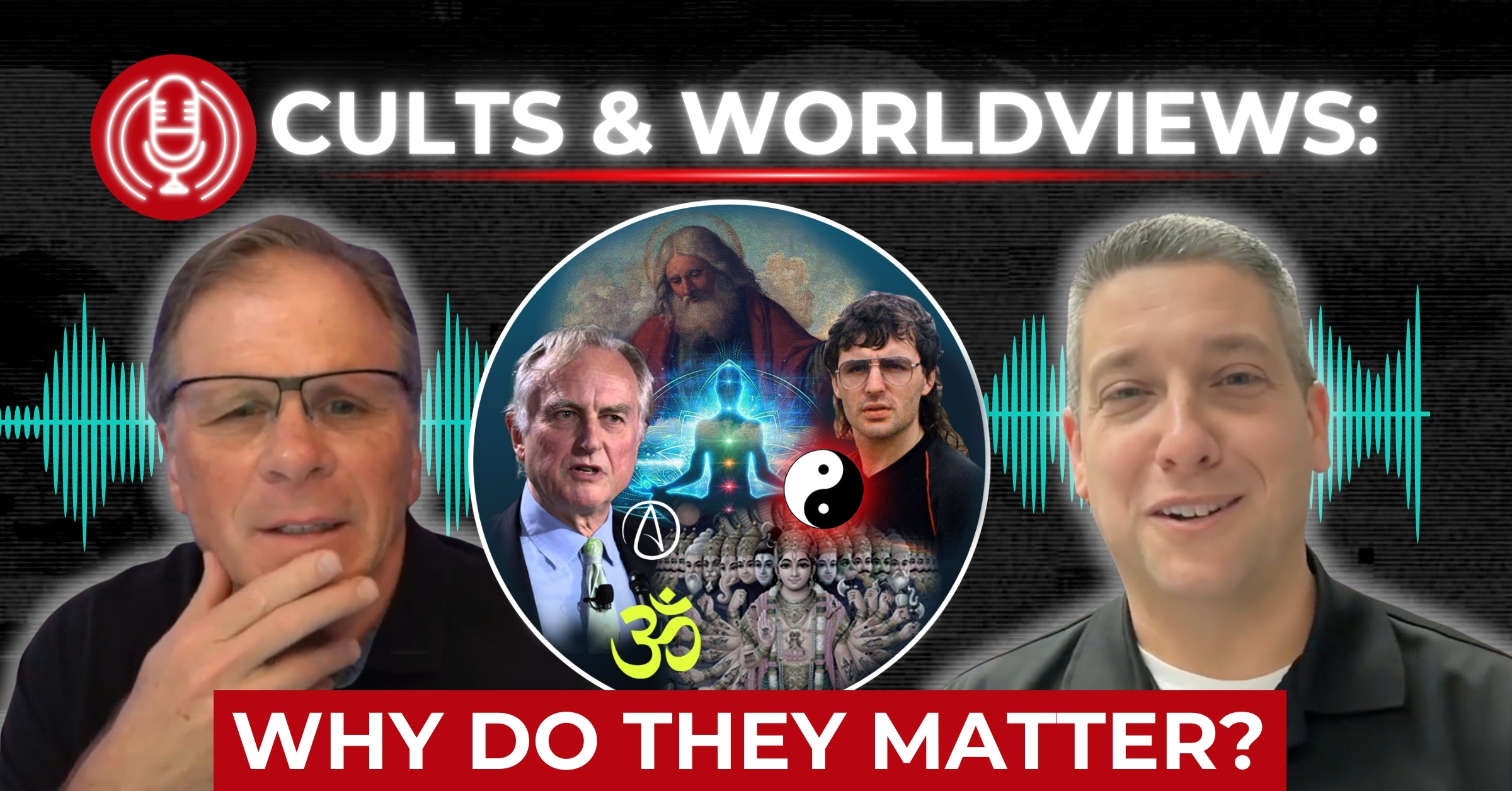

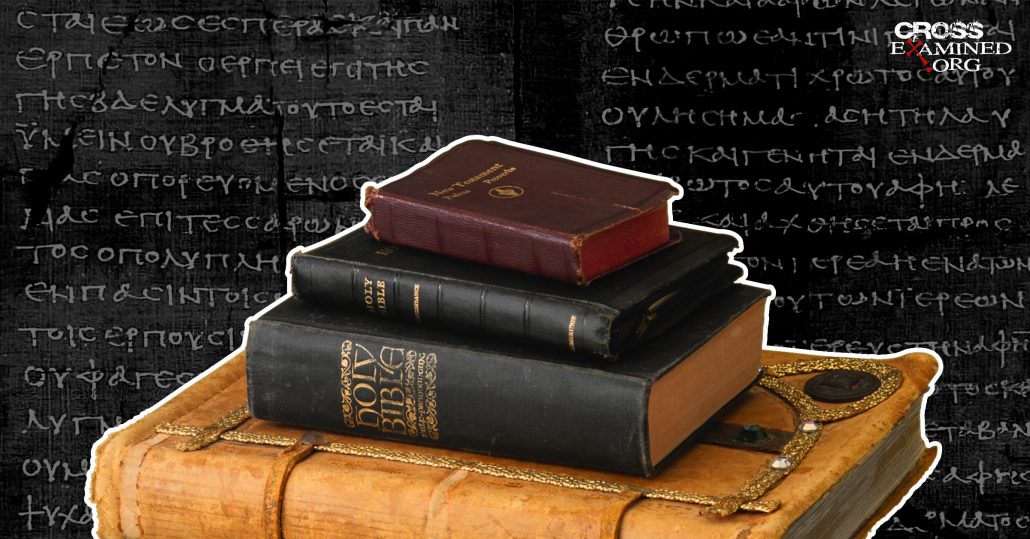
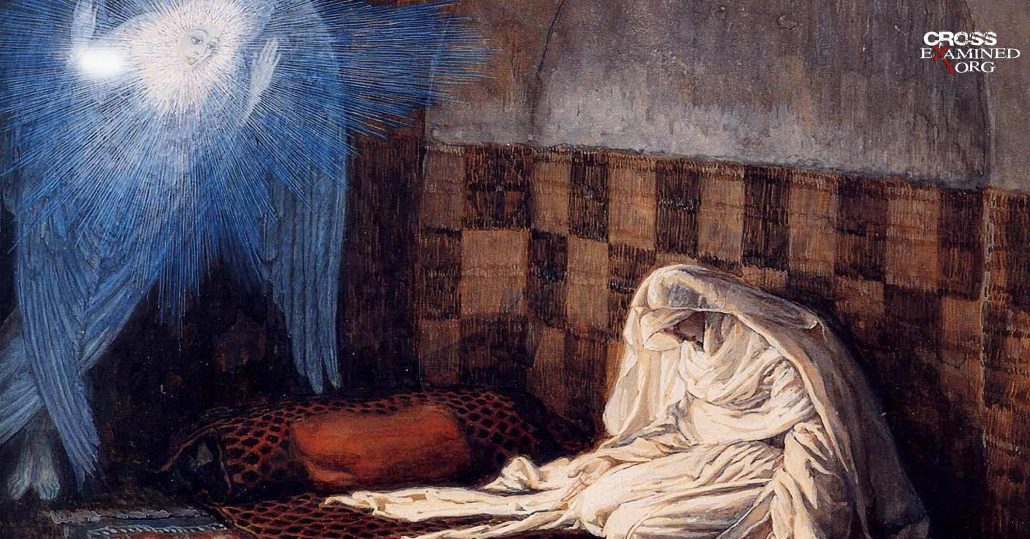
Leave a Reply
Want to join the discussion?Feel free to contribute!